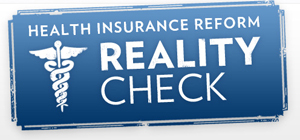February 18, 2013
Watching the Affordable Care Act Unfold (Or Maybe Unravel)

By Michael D. Shaw
Narrowly passed by Congress, signed into law by President Obama on March 23, 2010, and then upheld on June 28, 2012 in a Supreme Court decision that can only be termed “bizarre,” provisions and promises of the ACA—also known as Obamacare—are already being felt.
You might remember the oft-repeated promise made by Obama in 2008, whereby health insurance premiums for American families would be cut by $2500, and this would occur within his first term. Presumably, he based this contention on a memo written for his campaign in May, 2007 by three well-regarded experts from Harvard: David Blumenthal, David Cutler, and Jeffrey Liebman.
As they stated:
Combining all of these effects—from improved health IT, better disease management, reduced insurance overhead, reinsurance, and reduced uncompensated care —under our “best-guess” assumptions, we estimate that businesses will save $140 billion annually in insurance premiums. The typical family will save $2500 per year.
In reality, you would be hard-pressed to find anyone whose premiums have decreased. Rather, according to the latest annual Kaiser Family Foundation employee health benefits survey, premiums for employer-provided family coverage rose $3065—a 24% increase from 2008 to 2012. Looking only at the period after ACA became law, in 2011, premiums spiked 9.5%, and climbed another 4.5% in 2012.
Amazingly, the Harvard dons fell for the ridiculous notion that deploying more health IT would be some sort of transformative and revolutionary process; as if putting medical records on computer instead of in file folders would somehow save billions of dollars all by itself. Quoting again from the memo…
Greater use of information technology is one key to a more efficient health care system, along with incentives to use that technology wisely. The RAND Corporation conservatively estimated that significant investment in health IT could save $77 billion per year.
The Harvard dons relied heavily on an article published in the September/October 2005 issue of Health Affairs entitled “Promoting Health Information Technology: Is There A Case For More-Aggressive Government Action?” This article was one of seven described as “related documents” in the now infamous RAND report I discussed in a recent column. I say “infamous” since the report is now being disavowed by RAND itself, and was paid for by companies that stood to—and did—make billions off the health IT push.
Notably, the same author names (including RAND stalwarts James Bigelow, Anthony Bower, and Roger Taylor) keep appearing in these documents, as these supposedly independent researchers cite themselves and each other. I don’t think that’s what we mean by “peer review.”
Our Harvard Veritas boys save the best for last, as they conclude their memo with this gem: “Thus, we believe that the Federal financing for the Obama health plan will be available using already-identified sources of revenue and without new taxes on the overwhelming majority of U.S. taxpayers.”
Have you checked your pay stub recently? Moreover, Americans for Tax Reform lists the five worst of the 20 tax increases mandated by the ACA, with their estimates of the impact. Before you point out that ATR’s estimates could be as flawed as RAND’s, bear in mind that even if they are wildly inaccurate, it is undeniable that there will be tax increases—contrary to the false promises of ACA’s cheerleaders.
- ACA Medical Device Tax—$20 billion
- ACA “Special Needs Kids Tax”—$13 billion
- ACA Surtax on Investment Income—$123 billion
- ACA “Haircut” for Medical Itemized Deductions—$15.2 billion
- ACA Medicare Payroll Tax Hike—$86.8 billion
Slated for January 1, 2014 is the extension of Medicaid from enrollees making up to 100 percent of the poverty line—more than $11,000 for a single person—to those making 133 percent, or about $15,000. However this plays out, there will be an increased demand for primary care physicians. Too bad that the Feds have been doing all they can to discourage anyone from entering those specialties—for decades.
Lamentably, this is because the AMA’s Relative Value Scale Update Committee (RUC)—under exclusive contract to the Centers for Medicare and Medicaid Services—has been vastly underrating cognitive medicine (as in primary care), and scandalously building up procedural medicine. As I endlessly remind people, even though CMS is technically only involved with Medicare and Medicaid, it still greatly influences reimbursements for all private insurance at all levels of health care.
There is no doubt that RUC stinks to high heaven, and a few years ago, a group of Augusta, GA physicians sued to change things. Last month, a federal appeals court ruled against them. That court, and the original district court, rejected the docs mostly on procedural grounds, thus cravenly avoiding the real matter at hand. I can’t say that I was surprised. Indeed, the entire federal court system has been AWOL on health care since 1965.
Health care providers, regardless of specialty, are challenged to increase revenues. Canny marketeer Dale Rennie, CEO of OMS Asia, weighs in…
Enhancing productivity and streamlining the marketing process is essential for the health care industry. Conventional tactics like expensive TV commercials or radio spots, which seek to achieve nothing more than “awareness,” do little to reduce costs or make inroads with the very people most in need of care: patients.
A far better way for insurers and health care organizations to reach the public is through a combination of QR marketing codes and social media. By enhancing the power of a Facebook “Like,” which would showcase a friend or colleague’s interest in a specific issue relating to a doctor or health-related cause, a viral campaign can be created—without the expense or hit-or-miss tactics that define conventional forms of marketing.
Dale’s right, of course. ACA has certainly killed off anything conventional. As California governor Jerry Brown said frequently during the 1970s: “Lower your expectations.”

